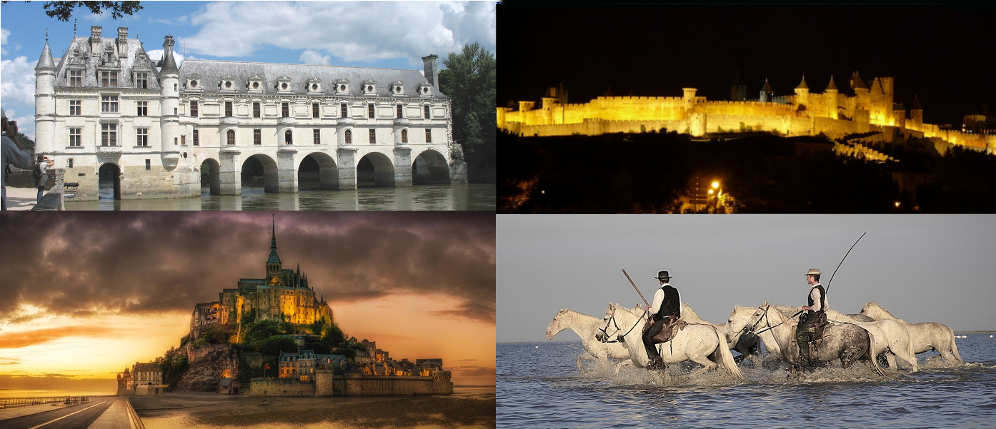
Must-see sights in France
The finest sites in France beyond Paris
- Explore France ►
- Essential pages
- Travel in France
- Where to go
- What to see and do
About-France.com
- the connoisseur's guide to France
Ten great must-see sights in France, not in Paris
COVID info:
France is open for tourism and there are no restrictions on
visitors.
Paris
is Paris... But France is a whole lot more than Paris.
It's one of the world's top tourist destinations, and probably the
country that, as a tourist destination, has most to offer in terms of
variety, history, landscapes, museums and more. There is so much to see
and do in France, that choosing ten "must see" sights is really an
impossible task.
The list below covers ten sites of exceptional interest in France, outside Paris and the Paris region. Most of them are recognised as UNESCO world heritage sites; most attract large numbers of visitors. All are very much worth the visit.
The list below covers ten sites of exceptional interest in France, outside Paris and the Paris region. Most of them are recognised as UNESCO world heritage sites; most attract large numbers of visitors. All are very much worth the visit.
| Rank |
Sight |
Details | |
|---|---|---|---|
| 1 |
Mont Saint Michel
(Normandy) |
A fairy-tale medieval city, clinging to a rock surrounded by the waters of St Michael's bay, Mont Saint Michel was for centuries a small city centered round a Benedictine monastery. Until the 19th century, it was an island surrounded by treacherous quicksands. Today the mount can be reached thanks to a causeway that is open at all times, except during exceptionally high tides. | UNESCO |
| 2 |
The Camargue (Provence) | The Camargue is one of the most important biosphere reserves in Europe. A unique area of wetlands in the delta of the river Rhone, it is a wildlife habitat of international importance. Indiginous white ponies live in semi liberty on the salt flats, which are also home to black bulls and pink flamingoes. The Camargue is also famed for its Gypsy heritage, and is the only place in France where visitors can drive through rice paddies. | UNESCO biosphere |
| 3 |
Old city of Strasbourg (Alsace) | The old city of Strasbourg stands on an island in the middle of the River Ill (that's ILL). With its germanic roots, Strasbourg, which lies in the Rhine valley, has a very attractive historic quarter, with its half-timbered houses, traditional wine bars, and craft shops. | UNESCO |
| 4 |
Cathedrale de Bourges (Centre - Val de Loire) | This is the least-known of the great gothic cathedrals in France; but the reason is simple. Unlike Chartres or Amiens and the others, it is not close to Paris, and until recently was not actually on a main route to anywhere. It was not on the tourist circuit. But Bourges has one of the finest and purest of France's medieval cathedrals, the only cathedral with five aisles, and also a cathedral with a magnificent collection of medieval stained glass. | UNESCO |
| 5 |
Roman remains at Nimes (Languedoc) | In and around the Mediterranean city of Nimes, near Montpellier stand some of the finest Roman remains outside Rome. The Maison Carré, a perfectly preserved Roman temple, the Roman arena, still in use today, and the Pont du Gard, an amazing Roman aqueduct, are just the icing on the cake. | UNESCO |
| 6 |
Carcassonne (Languedoc) | The old city of Carcassonne is one of the finest examples of a medieval walled city in Europe. While the city was extensively renovated and embellished in the 19th century, the essential structure of the city, its ramparts, its towers, its gates and its narrow streets, form the best example of a fortified medieval town anywhere in France. | UNESCO |
| 7 |
Chenonceaux
(Centre Val de Loire) |
The second most visited of the Loire châteaux, after Chambord, Chenonceaux is altogether more intimate, and unique. This Renaissance château is built literally "on" the river Cher. It is surrounded by beauriful gardens in the classic French style | UNESCO |
| 8 |
Puy du Fou
theme park |
A theme park with a difference. No roller-coasters, nothing American, but the greatest living history theme park in the world. Fifteen attractions and four large historic sets, plus the greatest sound and light show in France | |
| 9 |
Chamonix & Mont Blanc (Rhône Alpes) | While the whole of the French Alps is an area of outstanding natural beauty, the Chamonix valley, lying beneath the eternally snow-capped peaks of Mont Blanc, Europe's highest peak. From Chamonix a rack and pinion railway takes visitors up to an altitude of over 1900 metres, for a view over the "Mer de glace", the last surviving glacier in the French Alps. | |
| 10 |
The city of Albi (Midi Pyrénées) | Another small city, not on the main tourist trail, Albi is a historic city with a turbulent past. The massive medieval fortified red-brick cathedral, unique of its kind, is a witness to this. Next door to the cathedral, in the former bishop's palace, the Toulouse Lautrec museum celebrates the life and work of Henri de Toulouse Lautrec, the great post-Impressionist whose works have come to define life in Paris in the "Belle époque". Below the cathedral, a Roman bridge crosses the river Tarn. | UNESCO |
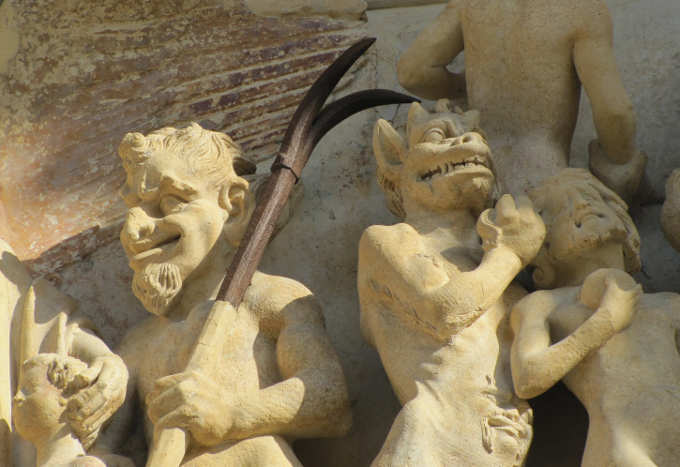
Detail from the medieval
sculpture on the west front of Bourges
Cathedral - more interesting and less restored than the
sculptures on Notre Dame in Paris. And far less visitors.
► Plan your visit - book ahead
If you plan to visit any of these sites during the busy summer period, you are strongly advised to book accommodation well in advance. Last-minute booking may be possible, but is not advised, as accommodation may well be fully booked , and you may need to book a room quite some distance away from the site. Click here to search for hotels throughout France, with best rates and online booking.Click here for a detailed map of France, which you can scroll and zoom on any area.
More of the Best of France on
About-France.com
| See also► | Industrial museums | Medieval fortresses | Beautiful villages |
| Best smaller towns | Best walled cities | Coasts of France |
About-France.com
Home
page - Site
search
- Regions
- Maps of France
- Contact
Photos
top of page -
Chenonceaux, Carcassonne,
Mont St. Michel, the Camargue
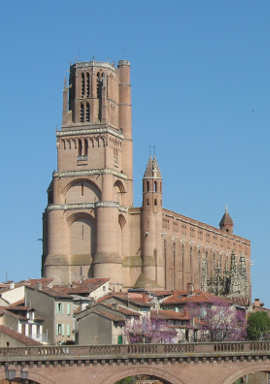
Fortified cathedral at Albi, near Toulouse
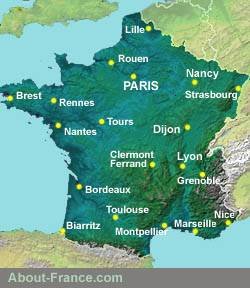
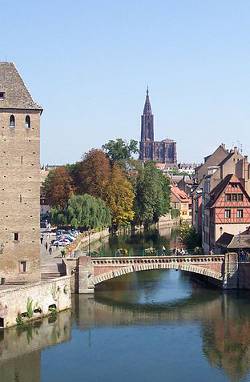

No bookings can be made through About-France.com. For tickets and accommodation purchases, users will be directed to major booking portals . About-France.com works as an affiliate partner of these portals, is not involved in bookings made through any third-party sites, and cannot answer any enquiries related to any purchases or bookings. As an affiliate partner, About-France.com may receive a small commission on some sales made through partner sites.
Website text and photos © copyright About-France.com renewed 2025 unless otherwise stated
Photo top of page : montage About-France.com from photos by About-France.com, Skeeze, Hans, 255843
Chenonceaux, Carcassonne,
Mont St. Michel, the Camargue

Fortified cathedral at Albi, near Toulouse
About-France.com
is an independent user-supported website
that does not track visitors, We
may receive commission from sales made
on selected partner websites reached through
affiliate links.


Old
Strasbourg

No bookings can be made through About-France.com. For tickets and accommodation purchases, users will be directed to major booking portals . About-France.com works as an affiliate partner of these portals, is not involved in bookings made through any third-party sites, and cannot answer any enquiries related to any purchases or bookings. As an affiliate partner, About-France.com may receive a small commission on some sales made through partner sites.
Website text and photos © copyright About-France.com renewed 2025 unless otherwise stated
Photo top of page : montage About-France.com from photos by About-France.com, Skeeze, Hans, 255843
